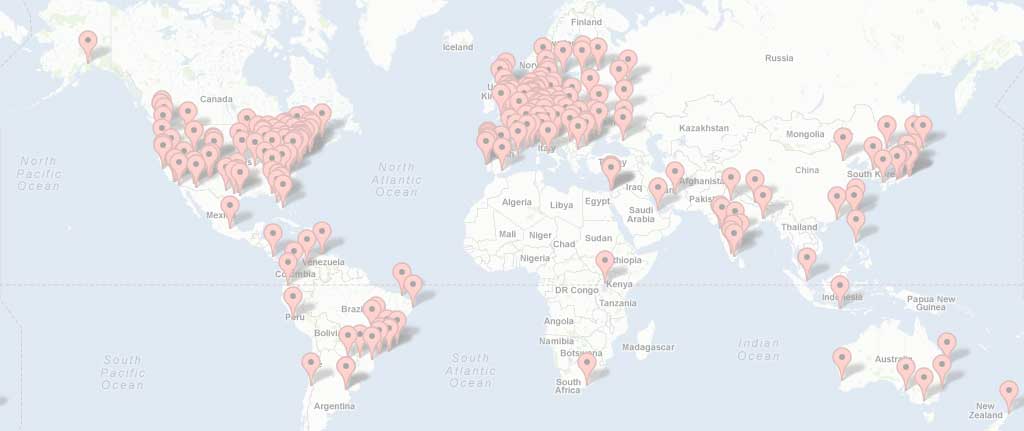
Perl Mongers
24 international Perl User Groups.
Welcome! This page intends to house all the information admins need to maintain pm.org services. Suggested improvements welcome via GitHub
Intro: How does *.pm.org work?
When anyone needs help with anything Perl Mongers they create a github Issue. Some requests are valid, some are bad ideas or conflicts between group leaders, and some are spam. Those tickets need to be waded through, as frequently as possible, by the pm.org admin volunteers. Everything there is to know about being a pm.org admin volunteer is right here, below.
Working the tickets involves pulling miscellaneous levers to fulfill the valid requests. I (jhannah) am happy to train new volunteers.
Current Admins
- Hardware overlords: Robert, Ask
- GitHub Issues: Jay Hannah, de-facto Chief Ticket Monkey
Procedures
Add a Group
- perl_mongers.xml
- Search to make sure the group didn't exist in a previous life.
- If you find the group, change their status to "active" and update all the info.
- If you don't find the group, add a new XML block, copying an existing active group and changing all the info.
- git: commit and push your changes
- Search to make sure the group didn't exist in a previous life.
- DNS for their website (legacy only): See DNS below
- Mailman. If they want a Mailman list (and one doesn't exist already), create one named "Groupname-pm".
- Update the website per /README
Modify a Group
Group Leader ("Tsar") Changes
- Update perl_mongers.xml
- Did their group status change? From "sleeping" to "active" for instance?
- Commit, push your change to github
- Follow the instructions below to change their MailMan password?
- Update the website per /README
Forgot my Password
- Ensure that the MailMan list is owned by the correct person
- Change the MailMan password
- Email group leader telling them that their password has been changed to the value listed in your notification, encourage them to immediately change it to whatever they want.
Remove a Group
- Mark group as inactive in XML file
- commit, push changes to github
- Update the website per /README
Web Update
See /README
Resources
git
The source repo is www.pm.org. See /README for the live site repo you'll flush to.
MailMan
- pm.org Admin mailing list - the 6 of us that admin pm.org (unused since ~2014)
- Group Leader mailing list - the ~400 group leaders
- List of all groups
- Timestamps when lists last saw activity. Some have been inactive for decades.
- Create a new list
- Remove a group - only Robert/Ask can run
rmlist - The super-duper MailMan password can admin all MailMan lists. If you need that secret and don't have it, ask Robert/Ask.
Cron jobs run every 20 minutes or so to implement any new groups you add.
DNS (legacy only)
In order to get a DNS change to happen, send an email to dns(at)perl(dot)org with information about the change you want made. You'll get an auto-reply ticket number back from RT. Things they do:
- A records - we will point them at groups.pm.org (216.52.237.133) or their server.
- CNAME records - sometimes this is easier than an A record
Sample Message
To: dns@perl.org Subject: aberdeen.pm.org -> 216.52.237.133 New Perl Monger group. Thanks!
XML
https://github.com/perlorg/www.pm.org/blob/master/perl_mongers.xml
All pm.org services are (or should be) driven by our single, master XML file.
That file is perl_mongers.xml.
The format is defined by perl_mongers.dtd (out of date).
See /README for flushing our XML to our live site.
The "status" attribute
Q: What does a status mlb or leb mean?
A: Dave Cross, November 2004: These are left over from when I was tracking down all of the groups in 2002. I emailed all of the group leaders to check if the group still existed. "leb" stands for "leaders email bouncing". In some cases I then went on to try and email the group's mailing list. "mlb" stands for "mailing list bouncing". I should probably change all of those statuses to "inactive" now.
Q: Is there a difference between inactive and sleeping?
A: Dave Cross, November 2004: Inactive means that the group is basically dead. There's no interest in keeping the group going. I keep the records around because someone might come along in the future.
Sleeping means that there are one or two people who want to keep the group running, but they are having trouble finding recruits. The main difference is that the xml program generates listing pages for groups with a status of "active" or "sleeping" - but not for "inactive".
Q: If status is not present, does that mean inactive?
A: Dave Cross, November 2004: Yep.
